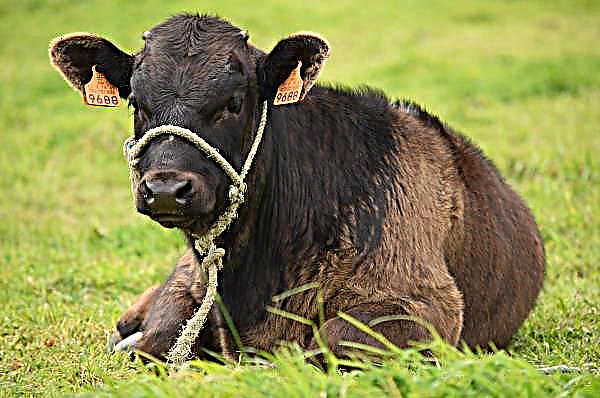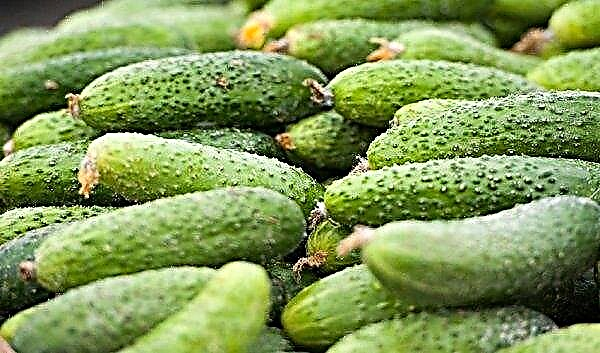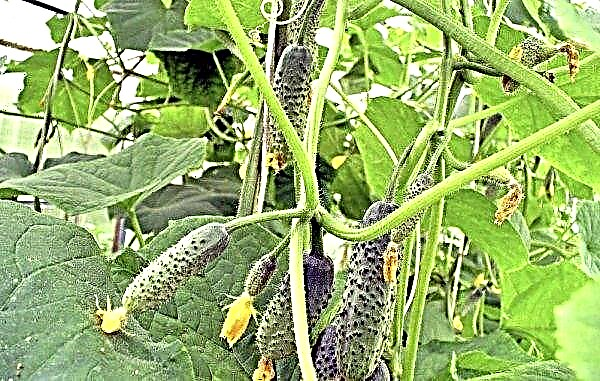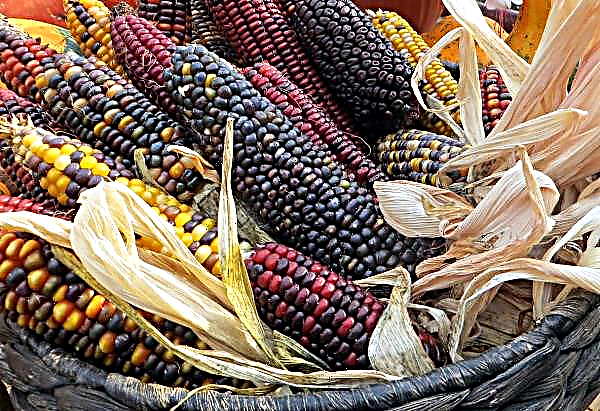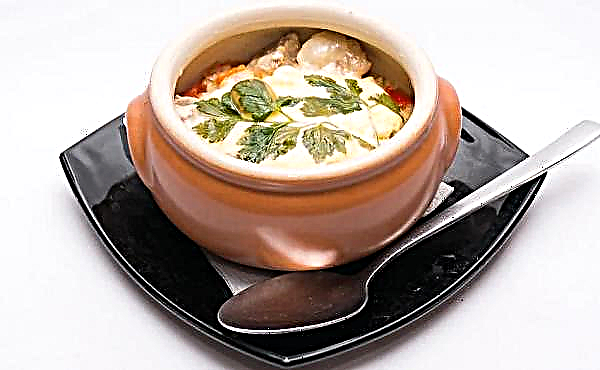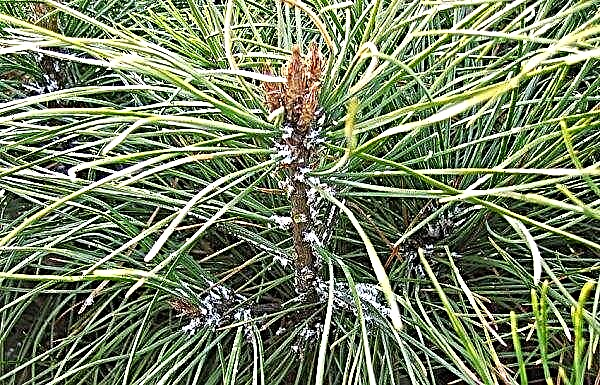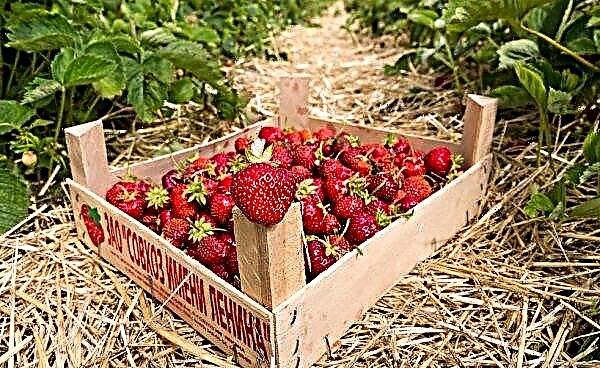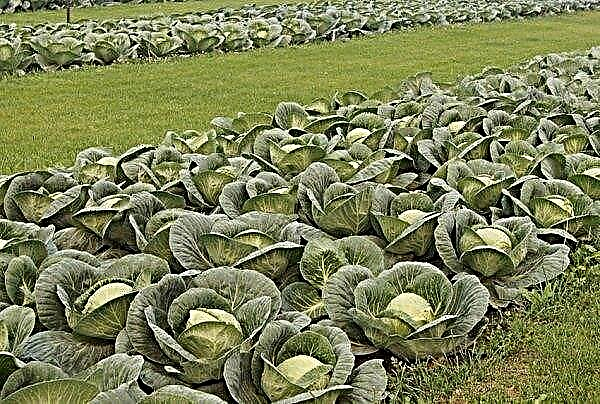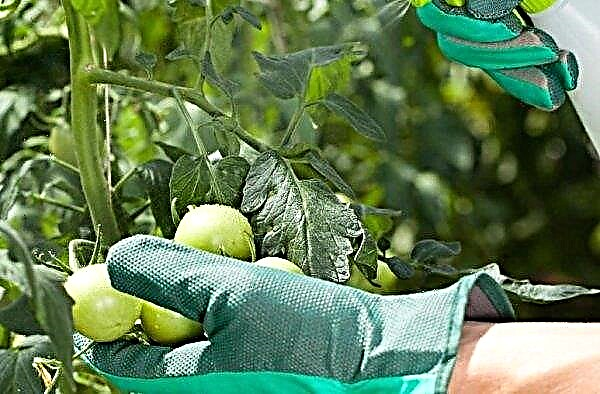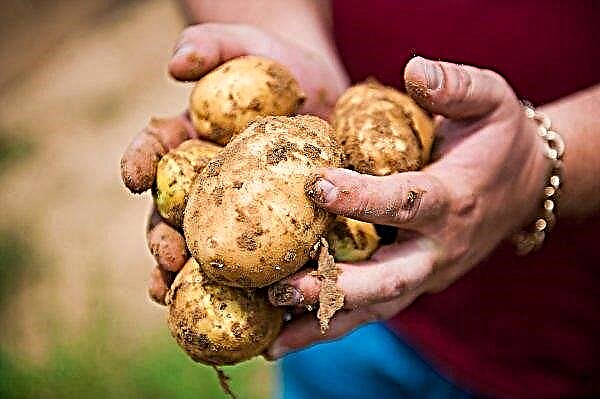If the year was fruitful for plums, try preparing alcoholic beverages for the festive table according to the recipes given in the article below.
Selection and preparation of ingredients
Any plum is suitable for the preparation of alcoholic beverages, but the more aromatic and sweeter the raw material, the better the taste of the final product. To this end, plum is best used with a peel to get a rich aroma and color of the drink. Only ripe fruits should be used in processing - unripe ones do not contain enough sugar, and in overripe ones there are a lot of pectin substances that can make the drink cloudy. Only the purchased plum should be washed, since it is not known what it was processed with.
 The fruits from your own garden are environmentally friendly. They do not need to be washed in order to preserve wild yeast in the form of a whitish coating on the peel, which take part in fermentation.
The fruits from your own garden are environmentally friendly. They do not need to be washed in order to preserve wild yeast in the form of a whitish coating on the peel, which take part in fermentation.
Fruits should be sorted and removed rotten and spoiled, otherwise they will ruin the taste of the drink. It is better to use filtered water, or let tap water stand for 12 hours.
Additional information that is useful in the cooking process:
- 1 kg of plum gives 580 ml of juice;
- 5 kg of plum with a sugar content of 20% have 1 kg of their sugar;
- 1 kg of sugar increases the yield of alcohol (40%) by 1.2 l;
- 1 kg of sugar in a dissolved state occupies a volume of 600 ml;
- from 15 liters of mash, 3.3 liters of moonshine or 1.5 liters of alcohol are obtained.
Did you know? Slivovitsa (plum brandy) is the national alcoholic drink of the Balkan peoples, but only Serbia has the right to use this name for the drink. According to the Balkan tradition, the first stack is not eaten in order to catch all the subtleties of taste.
Recipes of tincture of moonshine on a plum
The technology for making plum moonshine is the same as the production of chachi or grappa, the only difference is in the raw materials. The quality of tinctures consists of the ripeness of the fruit, the quality of alcohol, aging time, strength and proper sweetening.
Vodka, inexpensive cognac, moonshine or diluted alcohol (40–45 °) are used as alcohol-containing products. Stronger alcohol is poorly absorbed by fruit, and there is no fruity note in the final product.
Slivovitsa
The drink turns out to be of mild taste and aroma. Fortress 45–52 °.

30 (100 ml each) 2 hours
wine yeast
15 g (1 g per liter of wort)
water
10 l (0.5 l for yeast and 2 l for syrup)
Nutritional value per 100 g:
- Cut the plums in half and separate the stone.
- Grind to a puree state using a food processor, blender or twist in a meat grinder. For large volumes, you can use a drill with a special nozzle.
- Pour yeast for hydration with warm (+25 ... + 30 ° C) water (0.5 l) and add 3 tbsp. l Sahara. Leave on for 30 minutes. (refer to the instructions for the yeast used for the condition of their use).
- Dissolve sugar in boiling water (2 L) and cool to + 25 ° С.
- Pour the fruit puree, dissolved yeast, syrup and remaining water (7.5 L) into the fermentation bottle.
- Put the container with the must on the water lock.
- The fermentation process lasts 3 weeks.
- After 3 weeks, without removing the precipitate, overtake the steam with a careful selection of “heads” and “tails”.
Important! For the fermentation process, a stable temperature is needed - about + 25 ° C.
Video recipe
Slivovitsa Video recipe: Slivovitsa https://youtu.be/m51uOu3oiOM[/video]
Moonshine

100 (100 ml each) 2 hours
Nutritional value per 100 g:
- Remove the seeds from the fruits, knead them lightly with your hands and put them in a fermentation tank.
- Sugar should be added fractionally so that the concentration of wild yeast is maximum for the fermentation process.
- First, dissolve 2 kg of sugar in 6 l of water and pour fruit with this syrup to initiate fermentation.
- After 1-2 days, a foam appears on the surface, and the fruit mixture rises with a hat. Add another portion of 4 kg of sugar dissolved in 12 liters of water.
- After 3-4 days, add another 4 kg of sugar and, adding water, bring the mixture to 50 liters.
- Mix the mixture well, close the fermentation tank with a lid and keep at a temperature of +17 ... + 23 ° С. Periodic mixing speeds up the fermentation process.
- At the end of fermentation after 3–7 weeks (the foam and gas cease to form, and the mash acquires a pleasant sweetish smell), strain the mixture through a sieve to remove large particles, place it in the tank without spinning and distill through the apparatus, carefully separating the “heads” and “tails” ".
Important! Both in the first and in the second distillation, the first 150-200 ml of the drink (“head”) are poured into a separate container and are used only for technical purposes, for example, for igniting firewood.
Video recipe
Plum Moonshine Video Recipe: Plum Moonshine
Tincture

25 (100 ml each) 40 min.
vodka or peeled homemade moonshine (40 °)
2 l
Nutritional value per 100 g:
 Wash and dry the plums. Do not remove the bones. Try not to damage the pulp, otherwise the drink will turn cloudy.
Wash and dry the plums. Do not remove the bones. Try not to damage the pulp, otherwise the drink will turn cloudy. Put plums in a three-liter jar, pouring sugar over it. Pour vodka into the jar on the shoulders. The fluid level should be higher than fruits.
Put plums in a three-liter jar, pouring sugar over it. Pour vodka into the jar on the shoulders. The fluid level should be higher than fruits.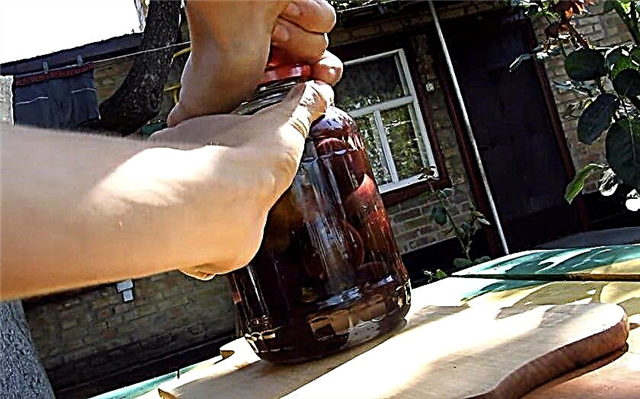 Close tightly with a plastic cover. Shake to dissolve and evenly distribute sugar. Repeat this procedure weekly. On the cover write the date of preparation so as not to miss the time of filtering.
Close tightly with a plastic cover. Shake to dissolve and evenly distribute sugar. Repeat this procedure weekly. On the cover write the date of preparation so as not to miss the time of filtering.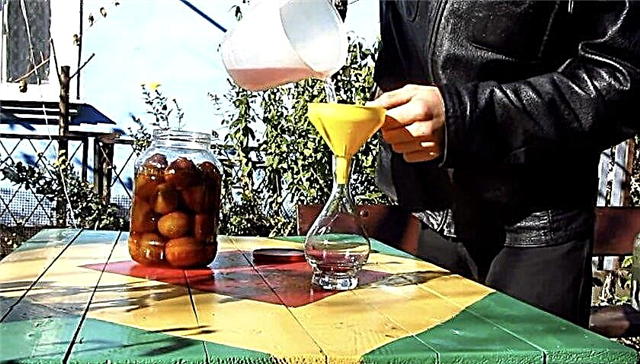 Put in a dark place for 1-1.5 months so that the drink is infused. Then drain the liquid and, if necessary, strain through a tissue towel.
Put in a dark place for 1-1.5 months so that the drink is infused. Then drain the liquid and, if necessary, strain through a tissue towel. The result is a fragrant and very soft tincture with a good taste and aroma. If desired, add a couple of buds of cloves, almonds or apricot kernels to the drink.
The result is a fragrant and very soft tincture with a good taste and aroma. If desired, add a couple of buds of cloves, almonds or apricot kernels to the drink.
Pour 150-200 g of sugar into the remaining plums, let it brew in a warm place until the sugar dissolves and strain. In this case, plum liquor is obtained. It can be used as a standalone drink or added for sweetening to the first tincture, from which the alcoholic note leaves when diluted with syrup. The procedure for falling asleep with sugar can be carried out until the plums wrinkle. Plums from tincture can be used in baking or as an independent snack.
Video recipe
Tincture Video Recipe: Tincture
Important! Part of the plum seed can be used in the preparation of homemade Amaretto type liquor with a bitter-almond flavor, due to the release of oil from fruit seeds.
Plum cord No. 1. By maceration (insisting) on alcohol

25 (100 ml each) 40 min.
vodka or diluted alcohol
2 l
Nutritional value per 100 g:
 Trim the damaged parts from the fruit and the place at the peduncle. Cut in half and remove the seeds.
Trim the damaged parts from the fruit and the place at the peduncle. Cut in half and remove the seeds.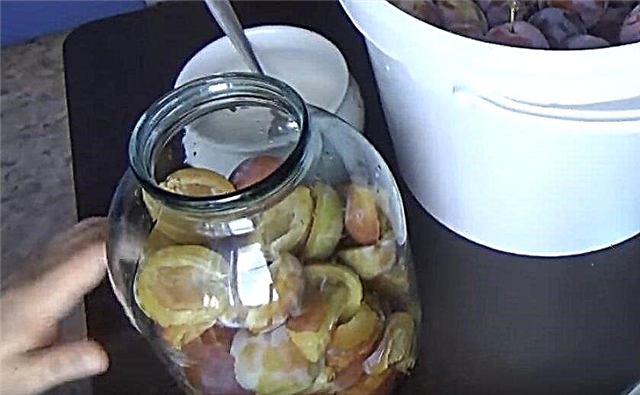 Put the fruit raw materials in a three-liter jar.
Put the fruit raw materials in a three-liter jar.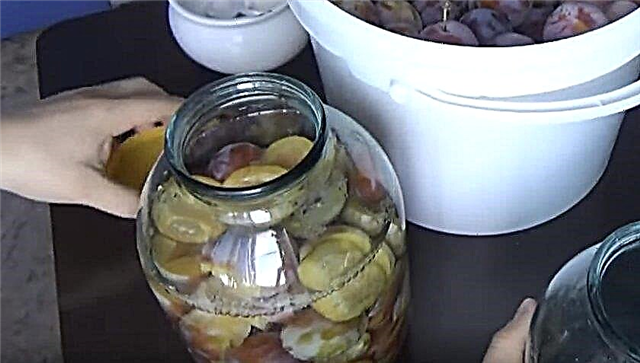 Add sugar and add vodka so that the liquid level is 2-3 cm higher, and the fruit floats freely.
Add sugar and add vodka so that the liquid level is 2-3 cm higher, and the fruit floats freely.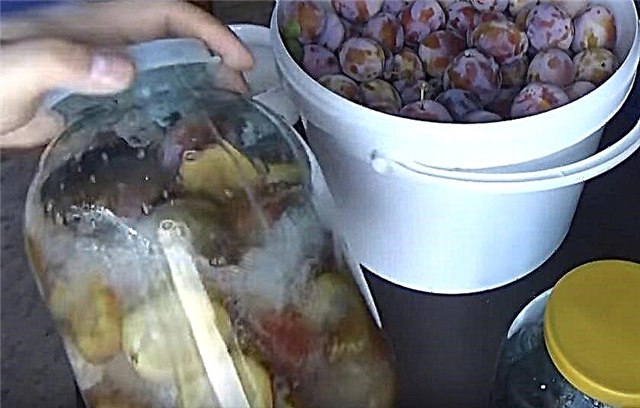 Cover with a plastic lid. Shake the mixture daily.
Cover with a plastic lid. Shake the mixture daily. After 4-5 days, strain the drink through a woven napkin folded into several layers and pour into bottles.
After 4-5 days, strain the drink through a woven napkin folded into several layers and pour into bottles.
Video recipe
Plum cord No. 1. By maceration (insisting) on alcohol
Plum cord No. 2. By fermenting fruit with wild yeast

20 (100 ml each) 40 min.
Nutritional value per 100 g:
- Prepare a 5 liter container (wash and dry).
- Remove seeds from plums, put them in a bottle, alternating layers of fruits and sugar.
- Mash the grapes and add the pulp in a jar with plums (you can add water) so that the fruit-sugar mixture is not very thick, since plums give poor juice.
- Cover the bottle with a lid for a gas vent or pull on the medical glove, piercing it with a needle.
- Put in a warm place until the end of fermentation.
- The fermentation process lasts about 2 months. During this time, periodically (1 time per week), shake the container.
- After fermentation, strain the drink and leave to infuse for another 2-3 months.

The filling is viscous and aromatic, with a strength of 16–18 °. You can dilute it with sparkling water or add strong alcohol to adjust the strength. The remaining plums still contain a lot of sugar, so they can be poured with vodka and let it brew for 3-4 weeks. As a result, you will get a secondary tincture.
Braga

70 (100 ml each) 40 min.
plum with bone
10 kg (1 bucket)
Nutritional value per 100 g:
 Plums are placed in a can (milk) for 40 liters. Add sugar, water and mix. Cover the can with a cloth from midges and dust and put in a warm place. Fermentation due to natural yeast takes place within a month.
Plums are placed in a can (milk) for 40 liters. Add sugar, water and mix. Cover the can with a cloth from midges and dust and put in a warm place. Fermentation due to natural yeast takes place within a month.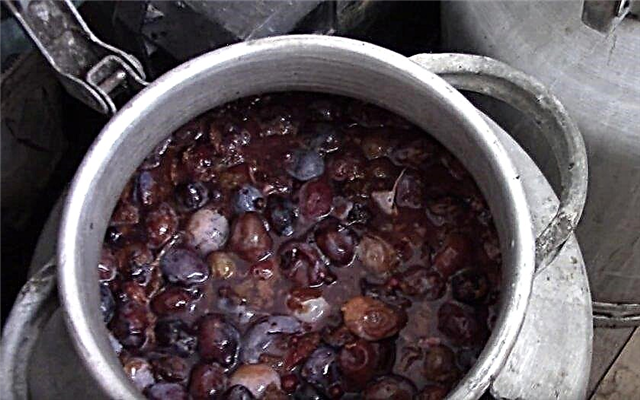 After this period, the formation of foam stops, the liquid becomes transparent, the cake settles to the bottom.
After this period, the formation of foam stops, the liquid becomes transparent, the cake settles to the bottom. Strain the mixture to separate the cake through a large sieve or colander so that the skins do not burn during heating.
Strain the mixture to separate the cake through a large sieve or colander so that the skins do not burn during heating. Pour into a cube for further distillation.
Pour into a cube for further distillation.
Video recipe
Braga Video Recipe: Braga
Did you know? Gin and tonic originated in British colonial India. The British population mixed tonic with quinine (a cure for malaria) and diluted gin to make the medicine less bitter.
Plum distillate

100 (100 ml each) 2 hours
vodka or wheat moonshine (sorting)
15 l
Nutritional value per 100 g:
- Fruit seed.
- Place in a fermentation tank and add alcohol.
- Place the container in a warm place for 1 month for insisting.
- After a month, pour the contents into a cube, heat with steam to avoid burning fruits and overtake using a steam generator. Distillation takes about 10 hours.

Output by fractions:
- 5 l (75 °) - fruit alcohol;
- 1.5 l (38–40 °) - the second “body”;
- 0.5 L (35 °) - “a foretaste”.
Features of storage of blanks
If you stick to the right technology, use quality fruits and alcohol products, then the resulting drink can be stored in a cool, dark room for up to 5 years. Drinks do not lose their fruity taste, and some become even more saturated. The bottles must be tightly closed to prevent evaporation of alcohol.
Did you know? When brandy is stored in barrels due to evaporation, the alcohol level decreases annually by 2%. This part is called the "share of the angels."
On the shelves of shops today there is a large selection of alcoholic beverages, but it is much more pleasant to prepare them yourself and treat your friends during a festive feast or after dinner as a digestif.

 Wash and dry the plums. Do not remove the bones. Try not to damage the pulp, otherwise the drink will turn cloudy.
Wash and dry the plums. Do not remove the bones. Try not to damage the pulp, otherwise the drink will turn cloudy. Put plums in a three-liter jar, pouring sugar over it. Pour vodka into the jar on the shoulders. The fluid level should be higher than fruits.
Put plums in a three-liter jar, pouring sugar over it. Pour vodka into the jar on the shoulders. The fluid level should be higher than fruits. Close tightly with a plastic cover. Shake to dissolve and evenly distribute sugar. Repeat this procedure weekly. On the cover write the date of preparation so as not to miss the time of filtering.
Close tightly with a plastic cover. Shake to dissolve and evenly distribute sugar. Repeat this procedure weekly. On the cover write the date of preparation so as not to miss the time of filtering. Put in a dark place for 1-1.5 months so that the drink is infused. Then drain the liquid and, if necessary, strain through a tissue towel.
Put in a dark place for 1-1.5 months so that the drink is infused. Then drain the liquid and, if necessary, strain through a tissue towel. The result is a fragrant and very soft tincture with a good taste and aroma. If desired, add a couple of buds of cloves, almonds or apricot kernels to the drink.
The result is a fragrant and very soft tincture with a good taste and aroma. If desired, add a couple of buds of cloves, almonds or apricot kernels to the drink. Trim the damaged parts from the fruit and the place at the peduncle. Cut in half and remove the seeds.
Trim the damaged parts from the fruit and the place at the peduncle. Cut in half and remove the seeds. Put the fruit raw materials in a three-liter jar.
Put the fruit raw materials in a three-liter jar. Add sugar and add vodka so that the liquid level is 2-3 cm higher, and the fruit floats freely.
Add sugar and add vodka so that the liquid level is 2-3 cm higher, and the fruit floats freely. Cover with a plastic lid. Shake the mixture daily.
Cover with a plastic lid. Shake the mixture daily. After 4-5 days, strain the drink through a woven napkin folded into several layers and pour into bottles.
After 4-5 days, strain the drink through a woven napkin folded into several layers and pour into bottles. Plums are placed in a can (milk) for 40 liters. Add sugar, water and mix. Cover the can with a cloth from midges and dust and put in a warm place. Fermentation due to natural yeast takes place within a month.
Plums are placed in a can (milk) for 40 liters. Add sugar, water and mix. Cover the can with a cloth from midges and dust and put in a warm place. Fermentation due to natural yeast takes place within a month. After this period, the formation of foam stops, the liquid becomes transparent, the cake settles to the bottom.
After this period, the formation of foam stops, the liquid becomes transparent, the cake settles to the bottom. Strain the mixture to separate the cake through a large sieve or colander so that the skins do not burn during heating.
Strain the mixture to separate the cake through a large sieve or colander so that the skins do not burn during heating. Pour into a cube for further distillation.
Pour into a cube for further distillation.